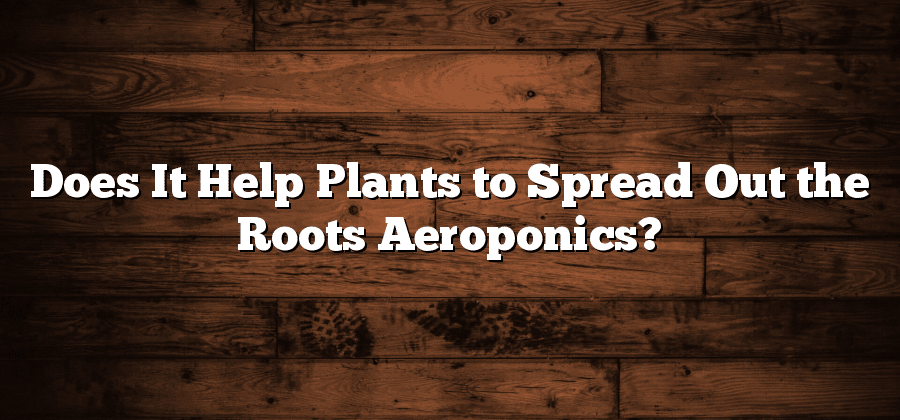What is Aeroponics and How Does it Work?
Aeroponics is a cutting-edge cultivation method that involves growing plants in an air or mist environment without the use of soil. This innovative technique utilizes a combination of water, nutrients, and oxygen to nourish plants and promote their growth. In aeroponics systems, plant roots are suspended in the air and periodically sprayed with a fine mist containing a nutrient-rich solution. This mist allows the plants to absorb nutrients and water directly through the roots, maximizing their uptake and ensuring efficient nutrient delivery throughout the plant.
The process of aeroponics involves the use of specialized equipment, such as misting nozzles and pumps, to create the ideal growing environment for plants. The nutrient-rich mist is sprayed onto the plant roots at regular intervals, ensuring a constant supply of essential elements for healthy growth. The absence of soil in aeroponics systems eliminates the risk of soil-borne diseases, pests, and limitations in nutrient availability. Consequently, plants grown through aeroponics often exhibit faster growth rates, increased yields, and enhanced nutritional content compared to traditional soil-based cultivation methods. This modern technique not only maximizes plant growth but also offers numerous benefits for sustainable agriculture and efficient resource utilization.
The Importance of Root Spreading for Plant Growth
Root spreading is a crucial aspect of plant growth that often goes unnoticed. When roots spread out in different directions, they are able to access a larger volume of soil. This results in increased nutrient and water absorption, ultimately leading to healthier and more robust plants. The spreading of roots also plays a significant role in anchoring plants firmly in the ground, providing them with stability and support as they grow.
Furthermore, root spreading allows for efficient exploration of the surrounding soil for necessary resources. With a wider reach, roots can tap into nutrient-rich areas, ensuring that plants receive an adequate supply of essential elements for their growth and development. This improved access to nutrients not only enhances the overall health of the plant but also promotes better yields and higher quality produce. In the absence of sufficient root spreading, plants may struggle to acquire the resources they need, leading to stunted growth and reduced productivity. Therefore, recognizing the importance of root spreading is essential for optimizing plant growth and maximizing agricultural outcomes.
Benefits of Aeroponics for Root Development
Aeroponics, a modern and innovative method of plant cultivation, offers numerous benefits for root development. This technique involves growing plants in a misted environment, wherein the roots are suspended in air and receive frequent bursts of nutrient-rich solution. The unique conditions provided by aeroponics result in several advantages that promote robust and healthy root systems.
First and foremost, aeroponics facilitates root spreading, allowing plants to develop a more extensive network of roots. Unlike traditional soil-based cultivation methods, aeroponics eliminates barriers such as compacted soil, allowing roots to grow freely without constraint. This unrestricted growth leads to enhanced nutrient absorption and water uptake, enabling the plants to thrive. With roots able to freely spread out, plants can also access a larger volume of oxygen, enabling improved respiration and overall physiological functions. As a result, aeroponics cultivates stronger and healthier plants, poised for optimal growth and productivity.
How Aeroponics Helps Plants Absorb Nutrients
In aeroponics, plants absorb nutrients through a highly efficient system that maximizes nutrient availability and uptake. Unlike traditional soil-based cultivation or even hydroponics, which relies on water as the main medium, aeroponics offers a unique approach to nutrient absorption.
In aeroponic systems, plants are suspended in the air, and their roots are regularly misted with a nutrient-rich solution. This mist, composed of water and essential nutrients, allows for direct and immediate contact with the plant’s roots. As the fine droplets envelop the root system, they provide an optimal environment for nutrient absorption. This direct application of nutrients ensures that plants receive the necessary elements quickly and efficiently. Consequently, the rapid nutrient uptake in aeroponics leads to vigorous plant growth and improved overall health.
Enhancing Water and Nutrient Uptake Through Aeroponics
Aeroponics, a revolutionary technique in plant cultivation, offers numerous benefits when it comes to enhancing water and nutrient uptake. Unlike traditional farming methods, where plants are grown in soil, aeroponics relies on a highly efficient system that suspends the plants in the air, exposing their roots to a nutrient-rich mist. This method not only maximizes the absorption of essential elements but also ensures that water is utilized optimally, leading to healthier and faster growth.
One of the key advantages of aeroponics in enhancing water and nutrient uptake is the direct delivery of nutrients to the plant roots. In this system, a fine mist of nutrient solution is regularly sprayed onto the roots, allowing for rapid absorption and utilization. This results in plants receiving a consistent supply of vital nutrients, fostering vigorous growth and overall plant health. Moreover, by misting the nutrient solution, aeroponics ensures that moisture is evenly distributed, preventing waterlogging or drought stress, which can be detrimental to plant growth.






